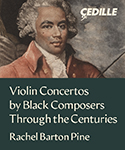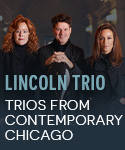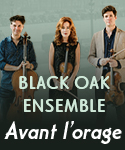These performances stand as a tribute to John Barbirolli’s heroic, decades-long effort to raise the playing standards of the Hallé Orchestra from fourth rate to third rate. Okay, that’s an exaggeration, but it’s still a fact that you never quite know what you’re going to get from this particular conductor/orchestra combination, though everyone concerned rises to the occasion here. Yes, the Hallé brass blat, the oboes whine, the initial explosion that touches off the first movement of A London Symphony lacks both weight of tone and wildness, and the tam-tam crash that caps the finale’s big climax sounds like a hubcap struck with a wooden spoon. And it’s true that Barbirolli rerecorded this symphony in better sound with a better orchestra a few years later. Still, there’s energy aplenty in the first movement, poetry in the second, a zippier scherzo than the later one, and (tam-tam aside) an intense finale (the opening is truly like a cry of pain: even the fact that the strings aren’t entirely together sort of adds to the effect) with an especially moving epilog. In the final analysis, so much more in this rendition goes right than wrong that you can chalk up the orchestra’s foibles to local color and leave it at that.
Vaughan Williams dedicated the Eighth Symphony to Barbirolli, and this recording was made in 1956 shortly after the hugely successful premiere. I have never understood the attitude of many British critics who dismissed this performance (the old Penguin Guide used to refer to it as “bluff”). It’s passionate, exciting, and sports a dazzling finale in which you can actually hear the three tuned gongs amid the rest of the jangling percussion. Turn to Haitink’s recent snooze-fest for EMI, and the differences are startling indeed. The two versions of the scherzo, for example, time out within a couple seconds of each other, but how much more alive, more characterful, and more dynamic Barbirolli and his players sound (and how they highlight the resemblance to Shostakovich in the music’s scoring and ironic wit)! The “lift” that Barbirolli gives the great passage in the finale featuring harp and percussion glissandos never has been equaled, and he manages the lovely third movement, strings-only Cavatina with an expressiveness that never grows sticky.
Even the sonics (courtesy of the famous Mercury Living Presence team of Wilma Cozart Fine, Robert Fine, and Harold Lawrence) offer far greater impact and more natural balances than Haitink’s digital dullness (however the engineering in No. 2, recorded in 1959 by an EMI crew, is a bit less vivid). Still, three cheers to Dutton and The Barbirolli Society for making it possible to have these splendid performances back with us again, sounding better than they ever have before.
































